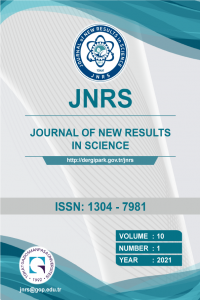Essential Oil Constituents of Thuja orientalis Berries
– Thuja orientalis essential oil,
___
- Singh, A.; Singh, V.K., Molluscicidal activity of Saraca asoca and Thuja orientalis against the fresh water snail Lymnaea acuminata. Veterinary Parasitology, 2009, 164, (2-4), 206-210.
- Kim, K.H.; Moon, E.; Kim, S.Y.; Choi, S.U.; Son, M.W.; Choi, S.Z.; Lee, K.R., Bioactive Sesquiterpenes from the Essential Oil of Thuja orientalis. Planta Medica, 2013, 79, (17), 1680-1684.
- Kim, C.S.; Choi, S.U.; Lee, K.R., Three New Diterpenoids from the Leaves of Thuja orientalis. Planta Medica, 2012, 78, (5), 485-487.
- Jung, S.H.; Kim, B.J.; Lee, E.H.; Osborne, N.N., Isoquercitrin is the most effective antioxidant in the plant Thuja orientalis and able to counteract oxidative-induced damage to a transformed cell line (RGC-5 cells). Neurochemistry International, 2010, 57, (7), 713-721.
- Lee, E.H.; Song, D.G.; Lee, J.Y.; Pan, C.H.; Um, B.H.; Jung, S.H., Flavonoids from the Leaves of Thuja orientalis Inhibit the Aldose Reductase and the Formation of Advanced Glycation Endproducts. Journal of the Korean Society for Applied Biological Chemistry, 2009, 52, (5), 448-455.
- Katoh, T.; Tanaka, R.; Takeo, M.; Nishide, K.; Node, M., A new synthesis of a potent cancer chemopreventive agent, 13-oxo-15,16-dinorlabda-8(17),11E-dien-19-oic acid from trans-communic acid. Chemical & Pharmaceutical Bulletin, 2002, 50, (12), 1625-1629.
- Bakkali, F.; Averbeck, S.; Averbeck, D.; Waomar, M., Biological effects of essential oils - A review. Food and Chemical Toxicology, 2008, 46, (2), 446-475.
- Türkmen, N.; Öz, A.; Sönmez, A.; Erol, T.; Gülümser, D.; Yurdakul, B.; Kayır, Ö.; Elmastas, M.; Erenler, R., Chemical Composition of Essential Oil from Rosmarinus Officinalis L. Leaves. Journal of New Results in Science, 2014, (6), 27-31.
- Guleria, S.; Kumar, A.; Tiku, A.K., Chemical composition and fungitoxic activity of essential oil of Thuja orientalis L. grown in the north-western Himalaya. Zeitschrift Fur Naturforschung Section C-a Journal of Biosciences, 2008, 63, (3-4), 211-214.
- Nickavar, B.; Amin, G.; Parhami, S., Volatile constituents of the fruit and leaf oils of Thuja orientalis L. grown in Iran. Zeitschrift Fur Naturforschung Section C-a Journal of Biosciences, 2003, 58, (3-4), 171-172.
- Tao, N.G.; Jia, L.; Zhou, H.E., Anti-fungal activity of Citrus reticulata Blanco essential oil against Penicillium italicum and Penicillium digitatum. Food Chemistry, 2014, 153, 265-271.
- Zhang, Z.J.; Vriesekoop, F.; Yuan, Q.P.; Liang, H., Effects of nisin on the antimicrobial activity of D-limonene and its nanoemulsion. Food Chemistry, 2014, 150, 307-312.
- Bagheri, H.; Manap, M.Y.B.; Solati, Z., Antioxidant activity of Piper nigrum L. essential oil extracted by supercritical CO2 extraction and hydro-distillation. Talanta, 2014, 121, 220-228.
- Bayala, B.; Bassole, I.H.N.; Gnoula, C.; Nebie, R.; Yonli, A.; Morel, L.; Figueredo, G.; Nikiema, J.B.; Lobaccaro, J.M.A.; Simpore, J., Chemical Composition, Antioxidant, Anti-Inflammatory and Anti-Proliferative Activities of Essential Oils of Plants from Burkina Faso. Plos One, 2014, 9, (3).
- Kpoviessi, S.; Bero, J.; Agbani, P.; Gbaguidi, F.; Kpadonou-Kpoviessi, B.; Sinsin, B.; Accrombessi, G.; Frederich, M.; Moudachirou, M.; Quetin-Leclercq, J., Chemical composition, cytotoxicity and in vitro antitrypanosomal and antiplasmodial activity of the essential oils of four Cymbopogon species from Benin. Journal of Ethnopharmacology, 2014, 151, (1), 652-659.
- Leal, S.M.; Pino, N.; Stashenko, E.E.; Martinez, J.R.; Escobar, P., Antiprotozoal activity of essential oils derived from Piper spp. grown in Colombia. Journal of Essential Oil Research, 2013, 25, (6), 512-519.
- Kapoor, S., D-Limonene: An emerging antineoplastic agent. Human & Experimental Toxicology, 2013, 32, (11), 1228-1228.
- Chueca, B.; Pagan, R.; Garcia-Gonzalo, D., Differential Mechanism of Escherichia coli Inactivation by (+)-Limonene as a Function of Cell Physiological State and Drug's Concentration. Plos One, 2014, 9, (4).
- ISSN: 1304-7981
- Yayın Aralığı: 3
- Başlangıç: 2012
- Yayıncı: TOKAT GAZİOSMANPAŞA ÜNİVERSİTESİ
Gamze Kaya, Rukiye KARAKAYA, Esma Tilgel, Merve Sandikci, Esra Yucel, Gayya Cicek, Omer KAYİR, Huseyin Aksit, Isa Telci, Abdussamat Guzel, Mahfuz Elmastas, Ramazan ERENLER
O. RAVİ, R.senthil KUMARB, A.hamari CHOUDHİC
Said BROUMİ, İrfan DELİ, Florentin SMARANDACHE
Gülşen Boztepe GÜÇLÜ, Tuğba GÜRKÖK, Mesut KOYUNCU, Neşet ARSLAN, İskender PARMAKSIZ
